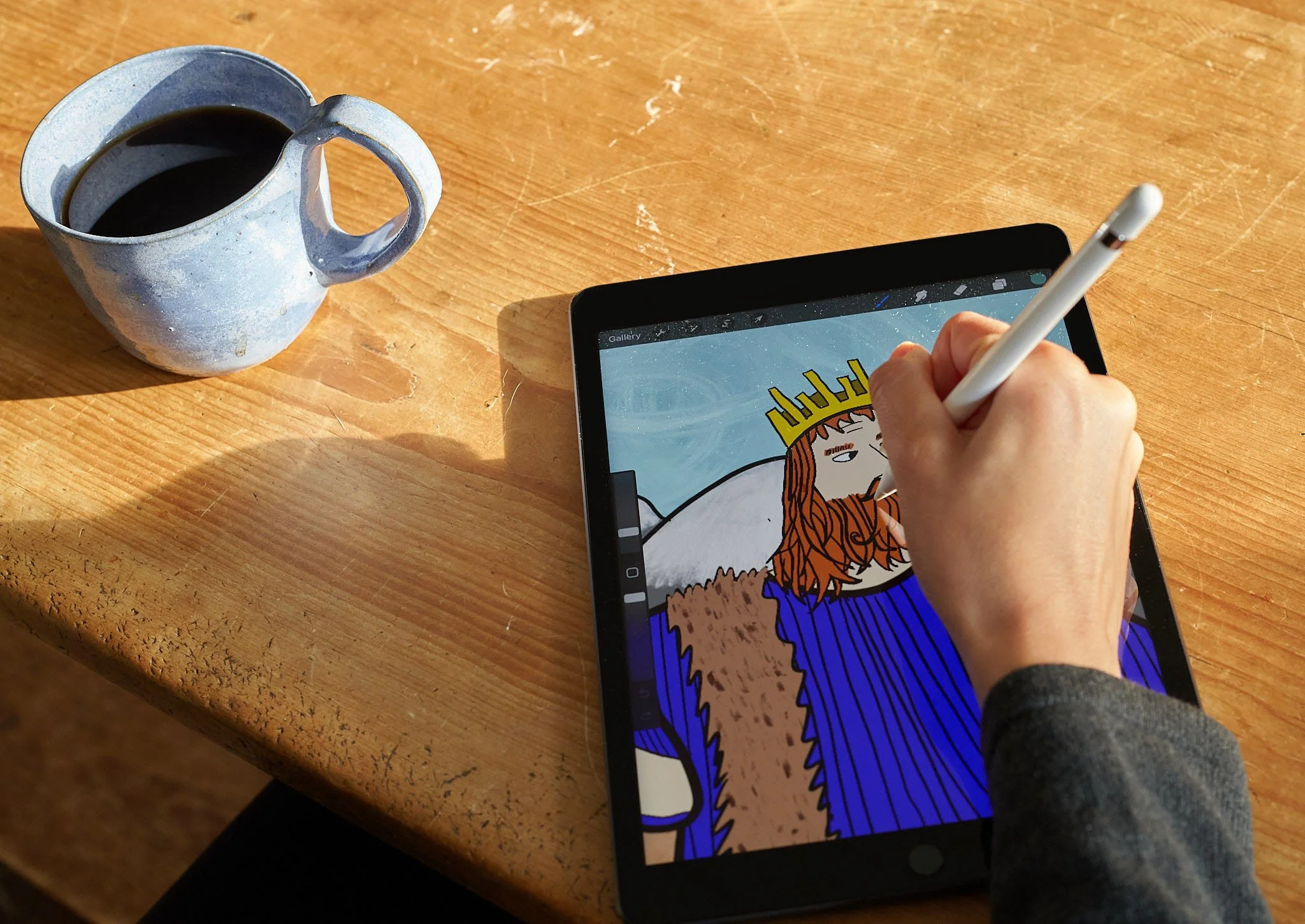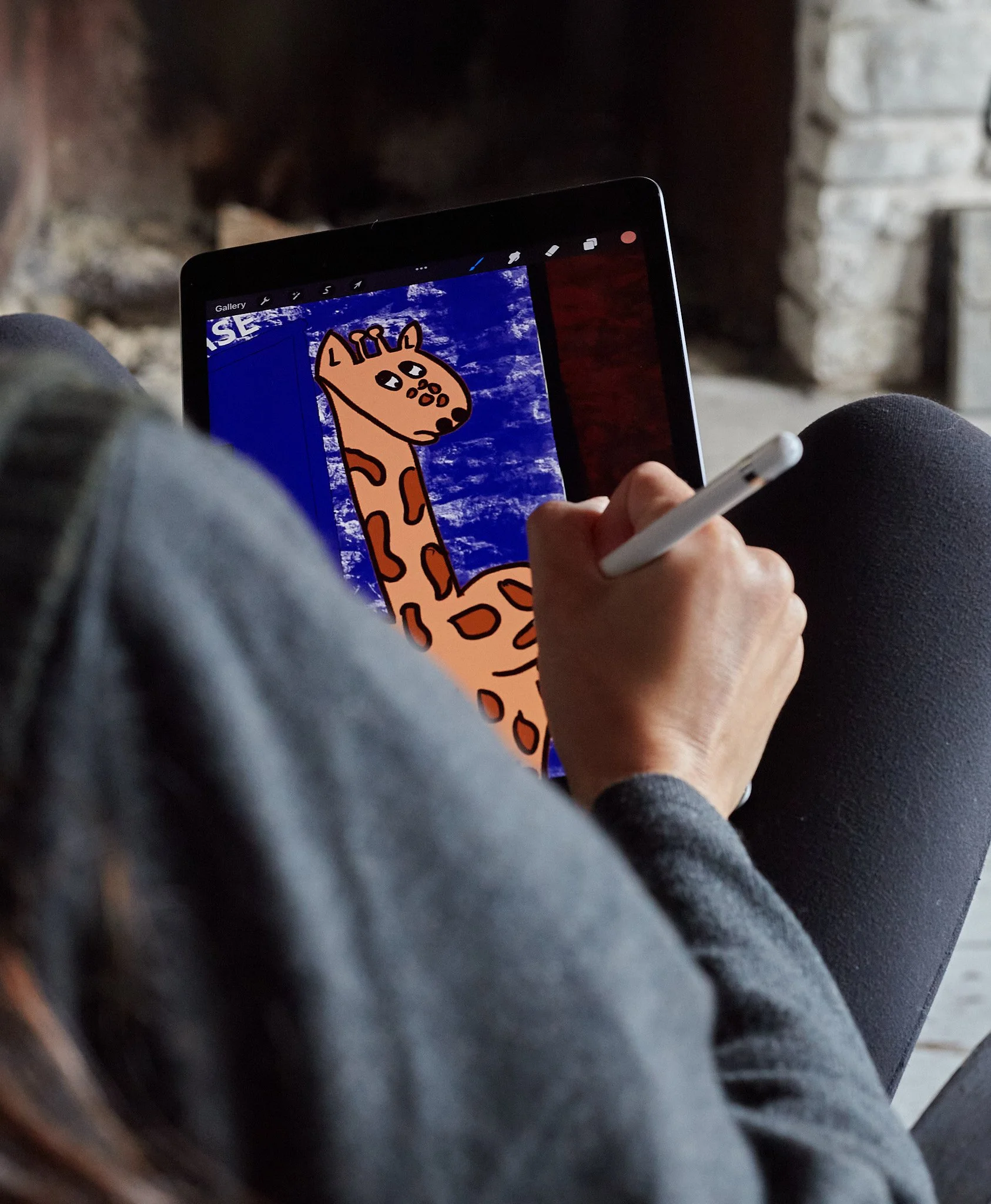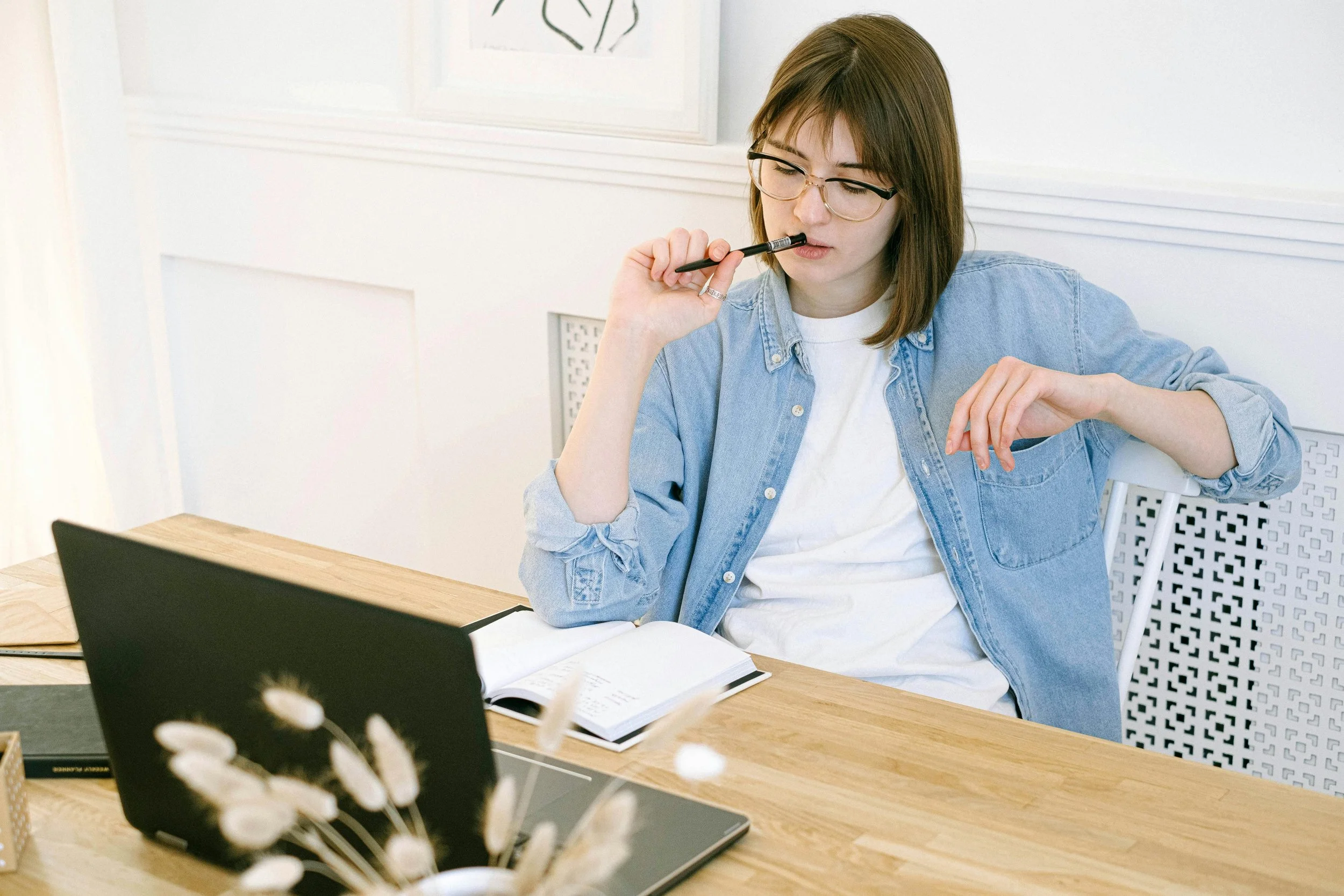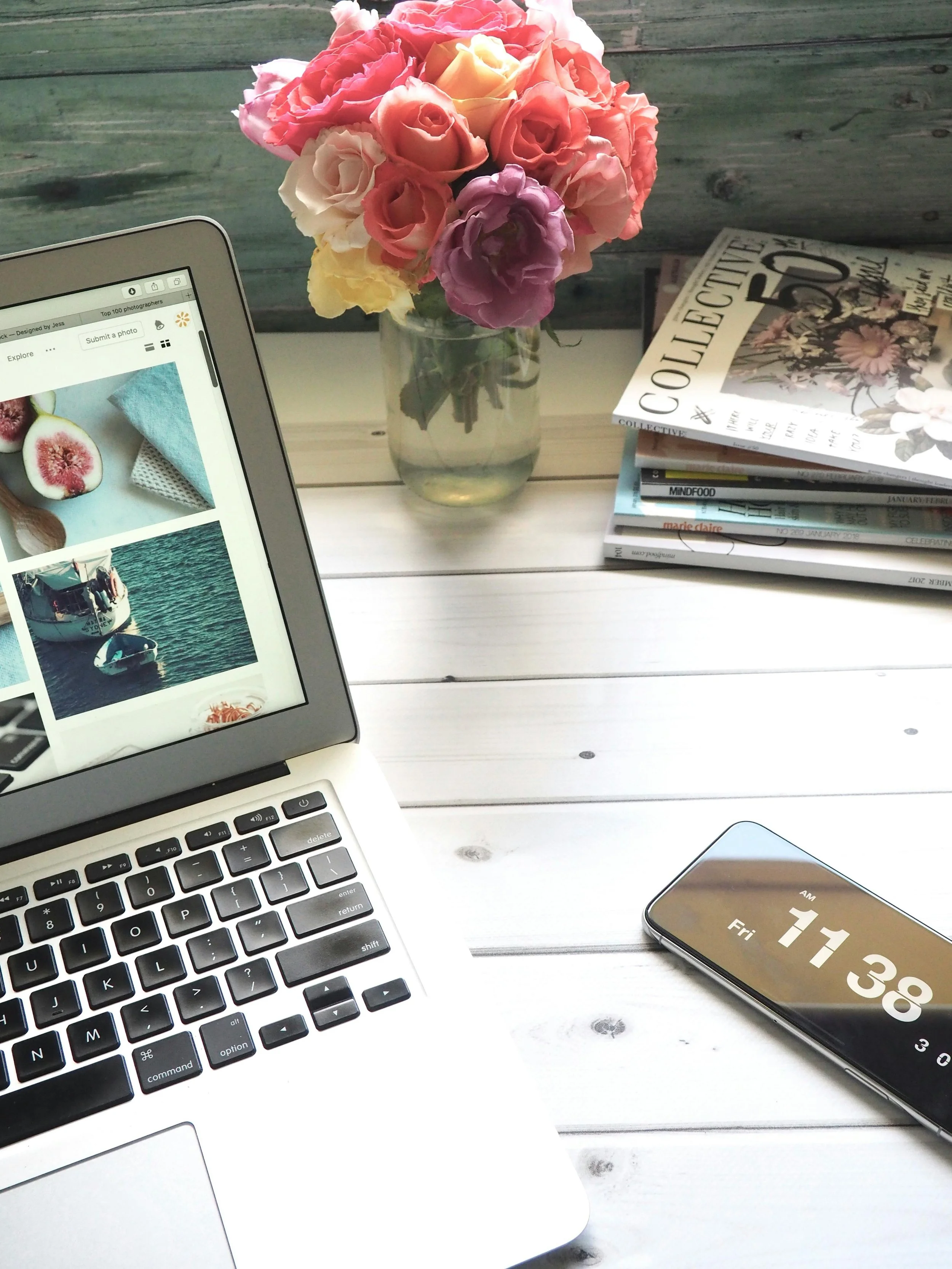How to Create a Digital Art Portfolio That Actually Gets You Noticed
By Cansu Waldron
Whether you're applying for freelance gigs, looking to land an art residency, or just want a clean, professional way to showcase your work, having a digital art portfolio is essential. It’s your visual resume, your pitch deck, your highlight reel.
But how do you actually build one that feels you and also gets the attention of clients, curators, or collectors?
This guide includes honest tips for making a digital art portfolio that stands out.
First Things First: What Even Is a Digital Art Portfolio?
A digital portfolio is an online collection of your best work. It shows people:
What kind of art you make
What your style is
What tools or mediums you work with
What you’re available for (commissions, licensing, collaborations, etc.)
It can live on a personal website, a portfolio platform, or even in a PDF or Google Drive folder, depending on the context.
Step 1: Curate, Curate, Curate (Less Is More)
Don’t dump everything you’ve ever made into your portfolio. Instead, choose:
Your strongest work
Pieces that reflect your current style
Projects that show a range of skills or versatility
Aim for 8–15 standout pieces. Think of your portfolio as an art exhibition — you’re guiding someone through a story about who you are as an artist.
Tip: If you work in more than one style, group your work into separate sections or projects. It helps people see your range without getting overwhelmed.
Step 2: Organize by Project, Theme, or Medium
You can arrange your portfolio in different ways:
By project: great for case studies or storytelling
By theme: if you explore recurring subjects or concepts
By medium: helpful if you work across 2D, 3D, animation, etc.
Each piece or project should include:
A title
A short description or caption
The tools or techniques you used
The year it was made
If applicable, add a few behind-the-scenes sketches or a time-lapse to show your process. People absolutely love seeing the process.
Step 3: Choose Where to Host It
You’ve got a few solid options:
1. Your own website (highly recommended)
Looks professional
Easy to control branding
Great for SEO and long-term growth
Platforms: Squarespace, Wix, Webflow, Cargo
Read this article next for tips on how to create the perfect artist website.
Behance
ArtStation
Dribbble (great for UI/UX art)
Read this article next for tips on how to choose the perfect platform for your work.
These sites are easy to update and good for exposure, but you don’t have as much control.
3. PDF portfolio
Ideal for applying to specific jobs, residencies, or grant programs. Artists often send us their PDF portfolios to get featured on DAB, too. Keep it under 10MB and name the file clearly (e.g. ArtistName_Portfolio2025.pdf).
Step 4: Write a Short Artist Bio or Intro
This doesn’t have to be fancy. A few sentences about who you are, where you’re based, what you love making, and what tools you use is more than enough.
Example: “I’m a Brooklyn-based digital illustrator exploring dreamy sci-fi themes through 3D motion graphics and character design. I mostly work in Blender and Procreate, and love telling visual stories that feel surreal but familiar.”
Keep it in the first person or third — whichever feels more natural to you. Bonus if you add a photo of yourself or your workspace.
Tip: I know ChatGPT makes it sooo easy for us to just generate an artist bio, but remember that it writes more or less the same bio to every single artist out there. And we can tell! It’s okay to get your bio copy-edited by AI before publishing, especially if you’re writing in your second language (like me!), but make sure that the author is still you, and it’s your words, and that your bio accurately describes your personal art practice instead of a generic hype paragraph about how you explore “identity, memory, and belonging.”
Step 5: Make It Clear What You’re Available For
If you want to attract opportunities, say so! Add a line like:
“Currently open for freelance commissions and brand collaborations.”
“Looking to join a creative studio or exhibit work in 2025.”
“Always happy to chat about project ideas or collabs — email me at...”
Don’t be shy. Put it out there in the universe!
Step 6: Include Contact Info (and Keep It Easy to Find)
You’d be surprised how many people forget this. At the very least, include:
Your email address
Social media
A contact form (if you’re using a website)
Put it in the header/footer and on a separate Contact page. Make reaching out feel easy.
Step 7: Keep It Updated (Set a Reminder!)
Your art evolves, and so should your portfolio. Try to revisit it every 3–6 months and:
Swap in new pieces you’re proud of
Remove old work that no longer reflects your style
Update your bio and availability
Artist Portfolio Checklist
Here’s a quick checklist to keep things on track:
8–15 strong pieces of work
Organized by project, theme, or medium
Short descriptions and year included
Artist bio or intro paragraph
Clear availability info
Contact info easy to find
Accessible site/platform or document
Up to date and free of typos
What Makes a Digital Art Portfolio Stand Out?
Consistency – style or vision should be obviously you
Personality — show a bit of you, not just the work
Professionalism — clean layout, no broken links or blurry images
Storytelling — why did you make this piece? What inspired it?
Intent — what kind of work do you want to be hired for?
If this is overwhelming, I’m happy to help you create a portfolio website – email me to learn more about how we can work together.
Your portfolio is a living thing. Don’t wait until it’s “perfect” to share it — get a simple version up and improve it over time. Think of it as your home base online. A place people can discover, explore, and remember your work. You got this!

















